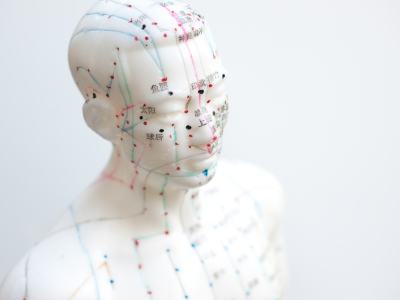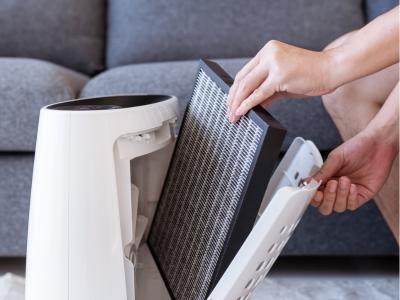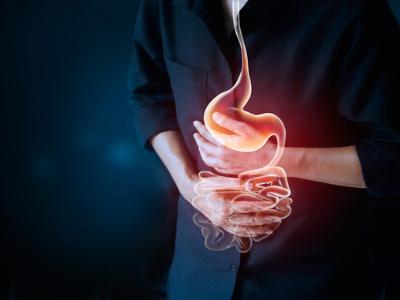Our acupuncture team at Raja Wellness provides a diverse set of experiences and skills. As the owner and clinical director, I have made it a point to find others who share my work ethic and passion for healing. In addition, I look for a diverse skill set. I wanted to take a moment to review our dynamic and exceptionally talented team.

Robert Cecil, LAc - Robert has a passion for healing and a talent for orthopedic and neurological issues. He works with a lot of our veteran patients addressing a diverse range of conditions from chronic pain to neuropathy to PTSD. In addition, his experience with Frequency Specific Microcurrent and Estim scar release techniques provides additional healing modalities in addition to acupuncture.

Fielding Carroll, LAc - For those dealing with chronic digestive disorders such as Chrohns and IBS, Fielding has developed a unique approach combining personalized nutritional therapy with acupuncture to help people radically change their digestive health. Patients report relief from decades-long issues after only a handful of treatments. He is also skilled in Soliman’s Auricular Allergy Treatment (SAAT), offering significant allergy relief from conditions like Alpha-Gal.
Our newest member, Jason Macko, LAc is trained in the 5 element technique, offering a gentle and integrated approach to complex conditions. In addition, he will be part of our team offering SAAT for Alpha Gal and other allergies. He is passionate about helping athletes optimize their performance and recover quickly from injuries. He is also skilled at handling complex cases and helping people reach optimal health.

Together, we offer a wide range of expertise and services to address the mental and physical well-being of our patients. Considering acupuncture as part of your healthcare regimen can be a transformative step toward holistic wellness! By seeking the expertise of a skilled acupuncturist, you embark on a journey to balance and restore harmony within your body, mind, and spirit. Whether you're seeking relief from pain, stress reduction, chronic issues, or overall health improvement, acupuncture offers a gentle yet effective approach rooted in ancient wisdom.
Your path to optimal health starts with a visit to an acupuncturist—discover the profound healing potential of acupuncture today!
Yours in Health,
Jenny-Marie Greenough, LAc
(or at least increased inflammation)...
While my heart goes out to all those in Canada who have lost land and homes due to the wildfires, my lungs are feeling the effects of that smoke all these thousands of miles away. Wildfires on this scale are hard to comprehend—tens of thousands of acres of trees, plants, and to a smaller extent, buildings, transformed to ash and smoke! Add to that our local “dust-maker”, (the construction project for Blue Oval just south of Elizabethtown), and this summer is more reminiscent of my days in California than a typical hot and humid Kentucky summer. So if you notice more irritation in your lungs than usual, sinuses that are more inflamed, and marvel at the spectacular sunsets we are having—you are experiencing the good, the bad, and the ugly of this summer’s skies.
So what can you do to protect your lungs? For one, watch the air quality index and when possible, limit your exposure to outside on days when it’s poor. If you have to be outside, try to avoid physical exertion, and when you come back in use a nasal rinse like Xlear or Nasopure to help flush the particles from your nasal passages. When you do get in cleaner air, that’s the time to get the respiration up to help flush out the lungs.
For those who have asthma or COPD, this type of environment is particularly challenging. Acupuncture and herbs can help reduce inflammation, improve lung function, and help you get through this challenging time with more ease. Limiting inflammatory foods like dairy, meat, sugar, alcohol, and processed foods will also help. See our handout, “Breath of Life - Nurturing Healthy Lungs” for a list of foods and teas that are particularly helpful for lung health and incorporate poached pears or our watermelon peel salad into your summer menus.

At home, check your air filters, and make sure you are changing your house filters regularly. If you have a higher sensitivity, consider adding air purifiers to the rooms you use most, especially your bedroom. In addition to lung-healthy herbs, formulas like “Breathmooth” provide soothing relief for tight lungs and AllerEase Jr. can help calm sinus inflammation. D-Hist is always a favorite among patients for those who need a natural antihistamine action. As always, our herbal consults are available to help ensure those who take prescription medications use only herbs and supplements that are safe with those prescriptions.
Additional References:
Raja Wellness Fullscript Nutritional Support
Preventing and Detoxing From Wildlife Exposure, Hearthside Medicine
The Effects of Mindfulness-Based Yogic Breathing on Craving, Affect, and Smoking Behavior, NIH
Link to AQI (Air Quality Index) for Elizabethtown, KY
I wanted to share my thought process and observations with my own recent experience with alpha-gal.
Alpha-gal, short for Alpha-galactose, refers to a complex sugar molecule found in the tissues of non-primate mammals, including cows, pigs, and other animals. It is also present in certain insects like ticks. Alpha-gal is known to trigger an immune response in some individuals, leading to an allergy called Alpha-gal syndrome. People with this condition may experience delayed allergic reactions after consuming red meat or products derived from mammals. Symptoms can range from mild to severe and may include hives, gastrointestinal discomfort, or even anaphylaxis. Alpha-gal has gained attention in recent years due to its association with tick bites and its impact on dietary choices and lifestyle adjustments for affected individuals.
Almost 5 years ago when I was doing my initial training with Dr. Soliman, about 1/3 of the class-tested weak to alpha-gal who didn’t think they had it—including myself. That explained why sometimes after I had bacon and eggs my stomach was off—I was beginning to think I had pepper sensitivity but we checked pepper too and only alpha-gal was weak. We did each other's needles as part of learning the process and 3 weeks later after I took out my needles, I had no issues with bacon and eggs. During that 3 weeks, I didn’t eat mammal meat or drink milk but otherwise, I didn’t kill myself avoiding mammal while the needles were in because I didn’t realize I even had an issue. Since then, I haven’t had any issues with mammal.

In an interesting twist of fate, my last tick experience resulted in a tick that tested negative for carrying any pathogens (thanks to the University of Kentucky tick tracking program, that testing was free for me) but I found myself experiencing what I thought was food poisoning about 6 weeks after the bite. I rarely get a stomach bug, but it didn’t feel quite like food poisoning. During that time, there was a stomach bug going around, so I stayed home to not share any bugs with my patients. I felt rough all day, but better by dinner which included mac & cheese with pork sausage…and I started feeling off again. I realized both dinners had pork. I took a Pepcid and within an hour I started feeling better—never progressed to vomiting. By the next morning, I felt great but was reasonably certain I had alpha-gal. It felt a lot like my patients' stories (I see a lot of alpha-gal patients!). It was going to be a couple of weeks to get into my doctor to get the blood test, but I see this every day.
The next morning at the office to get a clear test, I pull the basic alpha-gal filters: I check (alpha-gal, beef, pork, lamb, gluten, and MCAS) and to not bias my testing (because I know I might be weak to all of them), I add in some I’m pretty sure are safe: chicken, eggs, oats, rice, and avocado. My office manager has a good sense of feel and with a little coaching, I have good confidence in her ability to provide even pressure with each filter. She randomly puts them in the tray and tests me without looking at the labels with me looking away from the tray so I can’t see them—some test weak, some test strong…no surprise.
What was a surprise was the results—not the alpha-gal testing weak (I was pretty sure on that one), but the individual meats don’t test weak, nor does the gluten. It’s surprising as is the rice and the oats, but it also explains why I felt so bad the day before. I had a large bowl of oatmeal for breakfast and again for lunch to settle my stomach and felt bad all day. I conducted further testing using my specially formulated spays (currently in development, stay tuned!) with promising results. Now the question is how much mammal do I need to avoid to feel good? The meats and large amounts of dairy are out, but perhaps I can keep the cream in my coffee...
I do a 24-hour strict no-mammal or dairy diet and I feel great. Then I had my usual cream in my coffee—no symptoms initially, but around midday, I realize I have no motivation—I don’t want to be outside, I don’t feel like riding my horse, I can’t focus on anything I’m doing! Sure these aren’t allergy symptoms in the traditional sense, but they are not “my normal” by a long shot. I then eliminate regular cream for the next few weeks. I used coconut cream in my coffee and my brain wasn’t falling apart the afternoon! I take my specially formulated sprays and prep mammal-free meals for the week; including a dairy-free dark chocolate espresso bread with 9g of protein, no refined sugar, and no saturated fats. It’s not gluten-free; I adapted it from a gluten-free paleo recipe and swapped the coconut flour for organic white flour, so it easily could be.

In the end, it turns out allergies aren’t monolithic—it’s not always the same reaction to different things. I hear patients all the time tell me they tolerate dairy just fine and their allergist said they could have it because it didn’t show on the blood test—but just because you aren’t having hives, throwing up, or experiencing the “typical” allergies it doesn’t mean you are tolerating it. I’m not saying some people don’t tolerate dairy just fine with alpha-gal, I see patients who do. But it’s worth cutting things out for a few days to see what improves.
It’s not easy to do—I get it! My husband is not thrilled with this turn of events because he does a lot of our cooking and now he’s having to adapt for me. I thought a cake we made turned out pretty well, but he didn’t like it. Once I figure out why, I can hopefully tweak the recipe to work for both of us (I suspect he tastes too much coconut from the coconut oil or it wasn’t sweet enough for his taste). Apple sauce, banana, or shredded zucchini would have worked to tweak the taste too. I’ll try it again and see what happens. Cooking is an alchemy of transforming a pile of things into something else, and there’s more than one way to get there!
I’m pretty aware of what my body is feeling these days, I’ve learned the hard way to listen to it. My hope is you don’t have to suffer from not listening to your body—to be curious and notice not just the physical sensations you experience but mentally and emotionally how you feel as well and take that into account when making your food choices.
Yours in health,
Jenny-Marie
May is a month loaded with great awareness campaigns—most of which we see routinely in our clinic: Lyme, Mental Health, Ehlers-Danlos Syndrome, and Celiac Disease. Two of those are largely genetic—Celiac Disease and Ehlers-Danlos Syndrome—and while we can’t change your genes, acupuncture, herbs, and appropriate nutritional support can greatly improve the quality of life for patients with these conditions.
Our favorite supplements for Ehlers–Danlos Syndrome are available below; but please note these options are not all vegan or gluten-free so please contact our office for help choosing replacement products for this protocol if you need to avoid mammal or gluten:

Celiac Disease & Gluten Intolerance—What’s the Difference?
As far as Celiac Disease, there is a wide range of experiences: from those with an allergy to gluten creating the sensitivity, to those with true Celiac disease who simply won’t be able to effectively process gluten, to those who aren’t allergic—but react to the lectins in gluten and have an inflammatory response to these grains. While conventional thinking says allergies can only be managed and not treated, we are seeing people’s allergies actually go away (even as measured with IgE in the bloodwork) as a result of a highly specialized technique called “Soliman’s Auricular Allergy Treatment” pioneered by Dr. Nader Soliman, MD, LAc. While this technique is most widely known for helping people with alpha-gal allergies (an allergy to a carbohydrate found in mammal products triggered by tick bites) it actually is effective for most allergies.
We have helped people with nut allergies, dairy allergies, animal allergies, and even severe environmental allergies—not just pollen, dust, and molds, but more rare allergies such as sunlight and water! Gluten allergies also respond very well to this treatment; which brings me back to my earlier point about allergies vs. genetic limits vs. inflammatory response to other elements of gluten. For someone coming in with just a gluten allergy, this treatment will normally allow them to eat gluten without a reaction if they had a measurable IgE response to gluten in the past, and in many cases, this will disappear. Those with a genetic intolerance (what we refer to as “true Celiac”) still can’t eat gluten routinely after SAAT, but if they are accidentally exposed to gluten, they report that the reactions are greatly reduced. A similar effect is reported among those with lectin intolerance; they can’t always eat as much as they want, but small amounts and cross-contamination don’t cause the severe reactions they used to have.
For those with true Celiac—the reduced reactivity is a welcome relief; allowing them more options to enjoy meals with friends and family who may not realize what “gluten-free” really means even with the best intentions. For example, many people know that wheat has gluten, but they don’t realize most beers contain gluten. Foods like soy sauce and many spice blends contain small amounts of gluten as well, and for people with Celiac disease, even small amounts can create distressing reactions. Worse yet, labeling requirements are very bad in the US and many products contain unlabeled sources of gluten! In more severe cases, even topical exposure to gluten through lotions, soaps, or hair care products can create a reaction (though so far those reactions seem to be greatly reduced even in the most severe cases after SAAT).
Have someone in your life who needs to be gluten-free?
We created this handy guide of safe foods and hidden sources of gluten for reference!

The Hidden Cost of Lyme Disease
Lyme Disease may be one of the most pervasive and least frequently diagnosed conditions in the US. The current standard test, the ELISA test is estimated to be 70% accurate, but some independent testing has shown the current standard of combining an ELISA test with a Western Blot Test (which is reported to be 99% accurate) may be off more than 50% of the time, especially in cases of neurological Lyme. Worse yet, most doctors haven’t read the research about how a history of concussion or whiplash can make someone up to 80% more likely to develop chronic neurological Lyme because of damage to the blood-brain barrier. If there are other underlying chronic pathogens such as Epstein Barr Virus or Covid, those numbers very quickly get much worse. Diagnoses of Lyme Disease from Columbia University Medical Center
So in a month of Mental Health Awareness—why am I writing about misdiagnosed Lyme?
“People with psychiatric disorders related to Lyme disease may experience symptoms like fatigue, depression, anxiety, brain fog, rage, sleep disturbances, Bipolar disorder, and more. The longer that Lyme disease goes untreated, the more likely a patient is to develop these symptoms and disorders.”
The Effects of Lyme Disease, igenex.com
Chronic Lyme can also cause autonomic neuropathy. In these cases, the range of symptoms that can emerge is extremely broad and often leaves providers perplexed because the usual tests for those conditions will all be “normal”. Autonomic Neuropathy, Medscape
Arguably this subject can fill a book (one that I am working on) but suffice to say, many of the treatment strategies that are key to recovering from Lyme are beneficial for mental health, even in the absence of Lyme. Without going too far down into the weeds, it’s important to feed the body real food, minimize sugars (even hidden sugars like grains and breads), focus on nutrient-dense veggies for about 70% of your diet, and then find a balance of grains, fruits, and meats for the remaining 30% that keeps you feeling good. The same goes for mental health—better nutrition supports better mental health. In addition, nutrition to support the mitochondria in the cells can make a huge difference. Some of our favorites can be found here:
Feeling overwhelmed with how to eat healthy? Check out our free Facebook group, Raja Wellness Ways to Health for recipes, tips, inspiration, and to share those techniques that work for you!
Need one-on-one support? Clean Good Eats is a great resource—they have group classes on healthy cooking, or you can reach out to Dr. Sakinah Bunch for private coaching.
Yours in Health,
Jenny-Marie
Integrative medicine solutions including acupuncture and East Asian Medicine have received much attention as successful therapies in their treatment providing pain relief, regulating the immune system, managing symptoms, and improving overall quality of life. In addition, acupuncture increases the chances of a successful and healthy pregnancy for women with autoimmune conditions.
Autoimmune diseases are a group of disorders in which the immune system attacks the body and destroys or alters tissues. There are more than 100 serious chronic illnesses in this category including rheumatoid arthritis, type 1 diabetes, lupus, thyroid disease, inflammatory bowel disease, Addison's disease, pernicious anemia, celiac disease, multiple sclerosis, myasthenia gravis, and Guillain–Barré syndrome.
The exact mechanisms causing these changes are not entirely understood, but bacteria, viruses, toxins, and some drugs may play a role in triggering an autoimmune process in someone who already has a genetic (inherited) predisposition to develop such a disorder. It is theorized that the inflammation initiated by these agents, toxic or infectious, somehow provokes in the body a "sensitization" (autoimmune reaction) in the involved tissues.

As the disease develops, vague symptoms start to appear, such as joint and muscle pain, general muscle weakness, possible rashes or low-grade fever, trouble concentrating, or weight loss. The following symptoms may indicate something wrong: numbness and tingling in hands and feet, dry eyes, hair loss, shortness of breath, heart palpitations, or repeated miscarriages can also be caused by an autoimmune response.
According to the American Autoimmune Related Diseases Association (AARDA), more than 24 million people in the US have autoimmune diseases and another 8 million have autoimmune markers without a clear disease diagnosis. Of these, more than 80% are women. Each disease appears uncommon on an individual basis but, as a group, the disorders make up the fourth-largest cause of disability among women.

How Acupuncture Treats Autoimmune Disorders
According to East Asian Medicine theory, autoimmune disorders occur when there is an imbalance within the body systems related to immune functions. Imbalances can come from an excess or deficiency of yin and yang that disrupts the flow of Qi through the body. While these explanations sound strange, when the model is applied to the body, the treatments are very effective. Acupuncture is used to help the body restore balance; treating the root of the disorder, while specifically addressing the symptoms that are unique to each individual.
Clinical research has shown that acupuncture causes physical responses in nerve cells, organ function, and parts of the brain. These responses help the body rebalance. As a result things like blood pressure, body temperature, and the immune system return to a more normal and healthy state.
Acupuncture and herbal medicine provide safe and effective options for the management of autoimmune conditions and improving quality of life. Please contact our office with any questions.
Many of our patients are familiar with one of the frequency therapies we currently provide here, FSM (Frequency Specific Microcurrent). This new therapy is called Frequency Specific Pulsed Electromagnetic Field or FSPEMF for short. Unlike most PEMF therapies which use generic frequency bands, FSPEMP allows us to fine-tune the treatment to the condition and/or tissues being treated with specific frequencies.

An Electromagnetic Field (EMF) is the field of force that is created due to the interaction of electric and magnetic forces of charged bodies. Any charged particle can create these fields, including our cells. Every organ in the body produces its own signature bio-electromagnetic field. Every single cell in the body communicates via these electromagnetic fields at the overall rate of trillions of chemical reactions per second.
It is a therapy which uses specific frequencies of pulsed electromagnetic fields to trigger the body’s natural healing processes. FSPEMF stimulates and activates cells to help resolve cellular dysfunction, promote healing, and support overall wellness. It has been scientifically documented to have beneficial effects on multiple biological tissues ranging from bone to brain. FSPEMF triggers a cascade of biological processes that supports ailing tissues to promote optimum functioning and health.
There are 3 main ways electricity is at play in our body on a cellular level. The human body requires electricity to send signals throughout the body, including to the brain. Our own cells communicate with each other through electromagnetic exchanges in addition to chemical signaling. Each cell in our body acts as a small battery which stores bioelectricity. Any disruption in any one of these or all of them can lead to illness, dysfunction, and/or an increased risk of injury. Multiple factors can disrupt these electromagnetic communications, including aging, physical injuries, poor nutrition, and excessive physical or mental stress. FSPEMF is able to effectively help realign the electrical signaling at a cellular level and recharge the cells in order for them to function optimally. When the voltage of a cell falls below 15 millivolts, the cell malfunctions and emits receptors that trigger pain and inflammation. Restoring a cell to 20-25 millivolts permits the cell to operate normally. When a cell’s voltage is at 50 millivolts, it actively repairs itself, regenerating its internal components and expelling harmful toxins. What FSPEMF does is to provide the energy necessary to raise the cell’s voltage to 50 millivolts to actively repair itself.

FSPEMF may be helpful for all of the same conditions as FSM, however it is not a replacement. It can be used separately as its own powerful stand-alone treatment as part of a series of treatments or it can be used in conjunction with FSM and acupuncture with great synergy.
Unlike FSM, FSPEMF doesn’t use wet towels because it doesn’t require direct skin contact, and it is able to penetrate deeper into the tissues because it does not have to overcome the tissue resistance electrical current does. Small field generators are placed on or near the body and the FSPEMF is able to work non-invasively and safely. Most patients feel only a general sense of relaxation and well-being during treatment. There is no pain, or pulses of electricity as there is no direct contact with the body.

Patient#1
History
Has a long history of migraines which have been on and off with varying degrees of intensity. Over the last two weeks, she has had a constant debilitating migraine she describes the headache as if her head is in a vise. In an effort to provide her with relief, her doctor has prescribed 250mg of Topamax. Even with this amount of Topamax, she continues to have a constant migraine with 25% improvement. On top of all of this she currently in the midst of a contentious divorce which is causing her a considerable amount of stress.
Summary
After five treatments she was off all of the Topamax and Immitrex and was headache free. Treatment consisted of acupuncture using a nanopuncture protocol to improve vagal nerve function and FSM to increase Vagal nerve function as well.
After 1st Treatment on 2/13:
She had a small amount of relief after the treatment, however the next day the migraine was completely resolved.
She was HA free for a week.
After a very stressful encounter with her ex-husband, the migraine began to return, however it was about half of the intensity of prior to the treatment.
She also took Imitrex the entire week without any relief.
After 2nd Treatment on 3/6:
She noticed a small improvement initially after the treatment, however it was gone the next day and never returned.
She also decreased her Topamax from 350mg to 200mg (a 150mg decrease).
After 3rd Treatment on 3/17:
She remained headache free and decreased the Topamax to 100mg.
After 4th Treatment on 4/7:
Still no headaches
Has stopped taking Topamax
After 5th Treatment on 4/28:
She still had no migraine (she did have a tension headache)
She said she is feeling great and she is still not taking Topamax.
After 4/28 I have not seen her again; her father is also a patient who comes in bi-monthly. I regularly ask him about her and she continues to remain headache free.
We are often asked if acupuncture can help with allergies - up to a couple of years ago I would have said yes! Regular acupuncture treatments and herbs can make allergy season a breeze but it helps to be proactive and start a little before your "bad time of year" starts - over time, those reactions would diminish and the allergies would greatly improve. But that was before I learned Soliman's Auricular Allergy Treatment (SAAT) from Dr. Nadir Soliman. This technique is amazingly effective at calming allergies of all kinds - seasonal allergies, food allergies, skin allergies, even the dreaded alpha gal allergy which can leave people severely allergic to all mammal products. I often combine herbs and homeopathic remedies with this technique for seasonal allergies to reduce the number to sessions patients need but this is one of our most popular treatments.
So what is alpha gal anyways? We have a great video about alpha gal here. The short version is some species of ticks have a molecule in their saliva, a form of alpha galactose, that can cause people to develop an allergy to the molecule after being bit. Unfortunately most mammal products have this same molecule and this causes them to also have reactions to common foods like beef, pork and dairy or even just being around dogs, cats or horses. The reactions can be mild from slight itching or a stomach ache to severe pain, massive hives or even life-threatening anaphylaxis. With SAAT we have over a 95% success rate in calming these reactions. But SAAT isn't just for alpha gal allergies - we have seen people for allergies to milk, peanuts, soy, chemicals in perfumes, food dyes, even sunlight and water. It doesn't seem to matter what the allergy is, SAAT remains very effective.
This is not a technique all acupuncturists learn. It's a specialized technique and it's important to see someone who has been certified by Dr. Soliman as an approved provider. When asking about SAAT it's not just about the money. Talk to the provider about their experience, how they handle it if something doesn't work. We all have somewhat different approaches in how we incorporate this into our practices. Things I would ask is: What base things do they check for alpha gal? Just alpha gal, alpha gal and dairy and some mammal meats? I don't want people to have to come back for multiple trips if we "miss something" that is common with alpha gal so my alpha gal screening has increased from alpha gal, mammal meats, dairy and gluten to all of those plus MCAS, MCAS autoimmune antibodies, carrageenan, magnesium stearate, whey, milk and a broader dairy filter plus a wheat mix that includes more than gluten. Then ask about do they charge by the needle, or for the procedure? We charge by the procedure because often one needle will catch more than one substance. Ask if they re-check after the needles are out or if you just try things on your own. We try to re-check in the office whenever possible. If they do re-check - what's the policy if something that was treated isn't clear. Is it a new fee, reduced fee or no fee? A very small percentage of the time something needs to be redone in our experience. Ask about the policy if things seem fine for a while and then you start having reactions again - in our experience it's almost always something new if it's an allergy but MAST Cell can get triggered again in some people. We don't charge to re-check and see if something we treated for is causing an issue - Dr. Soliman says he's not treated the same allergy twice using this technique, and so far that's been true but I want people to know that they can come in for help if it seems like things aren't working. It's not going to be 100% in all people where you can eat mammal with abandon, but in terms of reducing reactions, improving quality of life, and making life with alpha gal less stressful I firmly believe SAAT is a worthwhile investment. When left untreated, alpha gal seems to get worse with time in many people leading to chronic low grade (or high grade) inflammatory responses that just make you not feel good. It is extremely rare when we can't significantly help people with alpha gal or other allergies.
Here's another great blog post about treatment for alpha gal. We regularly have excellent results with it - and remember - it's not just for alpha gal, it can be used with any allergy!